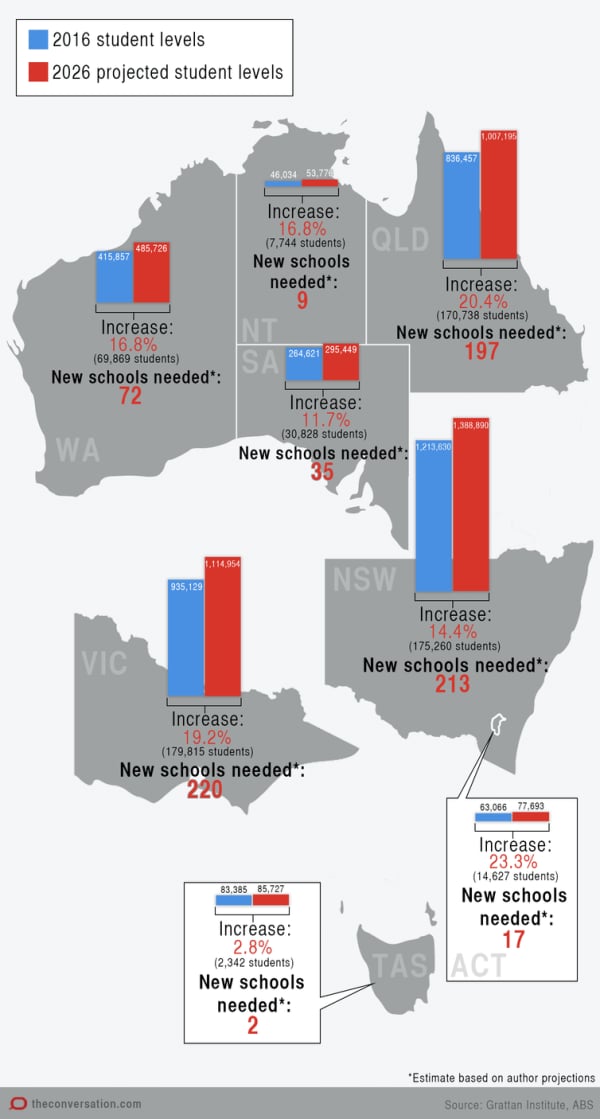
By Peter Goss for The Grattan Institute.
Australia’s population is booming. With it will come more school students – an estimated 650,000 more by 2026, an increase of 17% from today. Many new schools will be needed. Planning new schools is a long-term game: a child born today will start school in 2021 and complete year 12 in 2033.
How well are our planners doing? Will there be a shortage of school places? As a parent or a prospective parent, should you worry? The answer depends very much on where you live.
High-level demographic analysis can help us see the big trends. However, the issues can be very local, including how full your local schools are now, and school zoning regulations.
How many new schools, and how much will they cost?
To accommodate these extra 650,000 students, some 400 to 750 new schools will be needed. (Currently, there are about 9,400 schools in Australia.) Most will be primary schools – about 250 to 500.
Between two-thirds and three-quarters are likely to be government schools, with the remainder being either Catholic or Independent.
It costs about A$15 million to build a relatively standard primary school and more than twice as much for a secondary school. State governments will therefore need to find about A$6-11 billion to build government schools, close to a billion dollars every year on average. This is on top of the costs of maintaining existing schools.
At least in New South Wales this will mean a big uplift in investment. It has been reportedthat the NSW public school system is facing a A$7 billion shortfall in infrastructure spending over the next two decades.




























































































